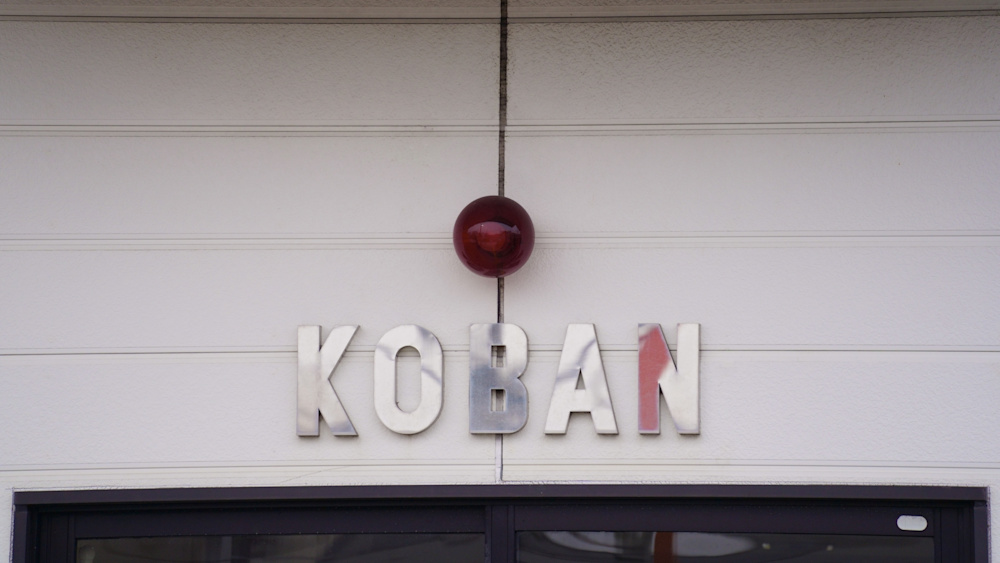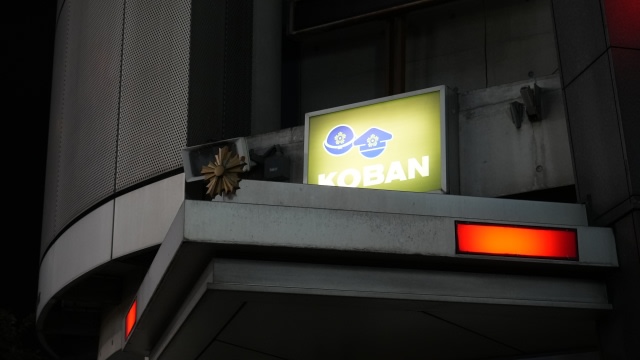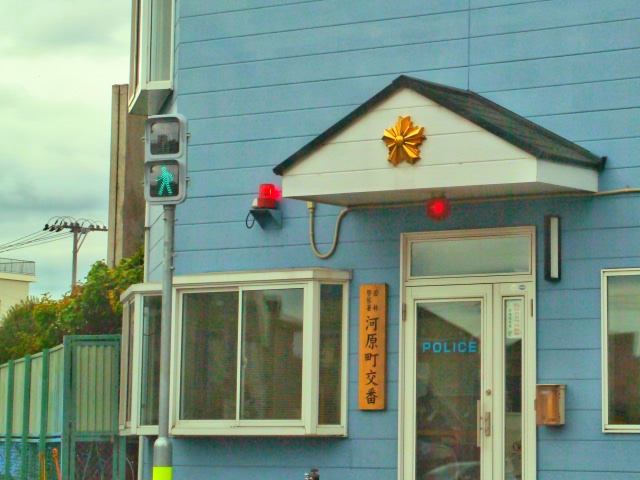Updated October 21, 2025
What is a Koban? Understanding The Police System in Japan
If you've walked around Japan, you've probably noticed small buildings with red lights and "KOBAN" signs scattered throughout neighborhoods. These aren't typical police stations but part of Japan's unique community policing system that helps make the country one of the safest places on earth.
Whether you're moving to Japan or just visiting, understanding what is koban in Japan and how this system operates will make your experience smoother and safer. Here's everything you need to know about this fascinating system that's been copied worldwide but never quite replicated.
In this article: 📝
Koban System of Japan: What Exactly is a Koban?
A koban (交番) is essentially a neighborhood police box. Think of it as a mini police station that's actually approachable. Unlike the intimidating police stations you might know from other countries, the koban system of Japan is designed to be welcoming.
These small facilities operate 24/7 with rotating teams of 3-10 officers who focus entirely on community-level policing. Kobans are strategically placed in high-traffic areas like train stations, busy intersections, and shopping districts, so help is always within walking distance.
The physical design of kobans reflects their approachable nature. Most feature large windows, open layouts. Many have small waiting areas with chairs, informational pamphlets, and even local area maps for public use.
The Three-Tier Police System in Japan
Does Japan have police? Absolutely, but they've organized it in a smart three-tier system that covers every corner of the country.
Keisatsusho (Police Station) – 警察署
These are your full-scale police headquarters. They’re the biggest facilities that handle serious crimes, major investigations, and administrative work.
Keisatsusho facilities are substantial buildings that house detective units, administrative departments, holding cells, evidence processing areas, and specialized units like traffic enforcement and cybercrime divisions. They typically serve populations of several hundred thousand people and oversee dozens of smaller facilities in their jurisdiction.
These stations also serve as coordination hubs during emergencies, natural disasters, or major events. They have the resources, personnel, and authority to mobilize large-scale responses when needed.
Koban (Police Box) – 交番
This is the middle tier, primarily in urban areas. Multiple officers work in shifts here, providing 24-hour coverage. So, what are police called in Japan at these locations? They are community police officers who specialize in local patrol duties and citizen assistance.
A typical koban might serve a few city blocks or a specific district, with officers who know the area intimately.
Modern kobans are equipped with computers, communication systems, basic first aid supplies, and direct lines to emergency services. Many also have bicycles or small patrol cars for area coverage.
Chuzaisho (Residential Police Box) – 駐在所
The smallest facilities are typically in rural areas with just one officer who often lives there with their family. This setup creates incredibly close community ties since the officer literally becomes your neighbor.
What is chuzaisho in practice? It's community policing where the officer assigned to a chuzaisho doesn't just work in the community but also lives there.
Rural chuzaisho are part police officer, part social worker, part community organizer, and often serve areas spanning several villages or remote districts.

When You Need to Visit a Koban
Understanding when and why to approach these different police facilities can make your life in Japan much easier. Here's when each type of facility becomes genuinely useful:
Getting directions and local information: Officers know their neighborhoods inside and out and are always happy to help with maps, local recommendations, or navigation assistance.
Lost and found services: Whether you've lost something valuable or found someone else's belongings, the koban serves as the community hub for reuniting people with their possessions.
Emergency situations and safe havens: While you should call 110 for immediate emergencies, kobans also work as safe havens during urgent situations. Even if officers are out on patrol, emergency phones inside connect directly to police communications, and the facilities themselves provide secure spaces.
Minor incidents and community issues: In non-emergency situations, like small disputes, suspicious activity, noise complaints, or general safety concerns, koban officers can provide immediate guidance, mediate simple conflicts, or escalate issues to appropriate authorities when necessary.
Personal safety and consultation: If you're feeling unsafe, being followed, or need escort assistance, koban officers provide immediate help and ongoing support. They can also offer advice on personal security, recommend safety measures, and provide information about local crime patterns or safety concerns.
Emergency Numbers: What You Need to Know
When emergencies happen, knowing the correct numbers can literally save lives. The Japan police number is 110, while 119 is for fire/ambulance. These numbers are completely free from any device and work from anywhere in the country.
When you call 110, the dispatcher first coordinates with local koban officers who know the area well. This means responders arrive with contextual knowledge about the location, potential hazards, and local circumstances that might affect their response.
Not sure if it's an emergency? Call #9110 first. This dedicated police consultation line will help you determine if your situation needs immediate response while keeping 911 available for critical emergencies.
For more information about navigating Japan's emergency services, including what information to provide and what to expect during emergency calls, check out our detailed guide on Japanese emergency numbers.
The History Behind The Koban System
Back in the 1880s, Japan introduced wooden police boxes, creating the foundation of the modern system we see today.
The name "koban" is said to come from "交替で番をする所" (kōtai de ban wo suru tokoro), meaning "a place where people take turns standing guard." It can also mean “watchtower.”
Interestingly, this Japanese innovation gained traction abroad after disappearing in Japan for some time.
Singapore was the first country in more recent history to adopt the system in 1984. It’s also known that Brazil, as well as multiple cities across the United States, have experimented with koban-inspired community policing, particularly in areas with significant Japanese-American populations like Los Angeles and Hawaii.
Even countries as diverse as Indonesia, South Korea, and Taiwan have implemented versions of the koban system today, each adapting the concept to local needs and cultures.
Current Scale: The Numbers Behind Japan's Safety
The scope of Japan's police infrastructure is genuinely impressive and helps explain why the country maintains such low crime rates. As of April 2024, Japan has approximately:
1,100 police stations (keisatsusho) serving as regional headquarters.
6,200 koban (police boxes) providing urban community coverage.
5,900 chuzaisho (residential police boxes) serving rural areas.
The staffing numbers are equally impressive. Each koban typically employs 3-10 officers working in rotating shifts, while chuzaisho are usually staffed by one officer and their family.
The system's effectiveness is reflected in Japan's crime statistics. The country consistently ranks among the world's safest, with crime rates decreasing over the decades as the koban system has matured and expanded.

Understanding Different Police Roles and Specializations
The koban system includes various specialized roles that work together to serve their communities. Understanding these different positions can help you know who to approach for specific needs.
What is Fureai Police Officers and Their Unique Role?
Fureai Police (ふれあいポリス) officers work long-term assignments in the same district to build deeper, more meaningful relationships with residents and local organizations.
Unlike regular koban officers who might rotate between different assignments, Fureai Police officers are committed to their communities for extended periods. This allows them to understand local dynamics, recognize patterns, and develop the trust necessary for effective crime prevention.
Their work goes beyond traditional policing. Fureai Police officers organize community safety meetings, coordinate with local volunteer groups, participate in neighborhood festivals and events, and serve as liaisons between residents and government services. They're part police officer, part community organizer, and part social worker.
Police Box Counselors: Experience in Action
Police box counselors (交番相談員, koban soudanin) are retired police officers who return to community service in civilian roles, bringing decades of experience to neighborhood policing.
What makes koban counselors particularly valuable is their combination of professional expertise and reduced authority. They can't make arrests or issue citations, which makes them more approachable for many residents.
Their typical duties include providing directions and local information, receiving various types of citizen consultations and complaints, supporting active officers at crime scenes and during investigations, assisting with victim care and community outreach, and conducting routine patrols of school zones and residential areas.
The counselor system addresses a common challenge of policing, which is how to retain and utilize the knowledge of experienced officers after retirement. So, rather than losing this expertise, Japan has created a way to keep these veterans engaged in community service while freeing up active officers for duties that require full police authority.
Community Safety Supporters: Bridging Police and Civilians
Community Safety Supporters (地域安全サポーター, chiiki anzen sapota) work primarily at Community Safety Centers, which are essentially civilian-staffed koban-style facilities. Like koban counselors, these are typically retired police officers, but they focus specifically on community outreach and volunteer coordination.
Their role includes providing geographical guidance and local information, handling lost and found property with appropriate documentation, conducting school zone patrols during peak hours, participating in volunteer crime prevention activities and community events, and serving as bridges between professional police and civilian volunteer groups.
What makes Community Safety Supporters unique is their focus on activating civilian participation in community safety. They help organize neighborhood watch groups, coordinate volunteer patrol activities, and provide training on crime prevention techniques. They're essentially community organizers with law enforcement backgrounds.
Daily Life at a Koban: What Officers Actually Do
Understanding what koban officers do on a typical day helps explain why the system works so effectively. Their activities include:
Neighborhood patrols: Conducted on foot, bicycle, or by small patrol car, officers maintain a visible presence while staying accessible to residents. These are both security patrols and community engagement opportunities.
Crime investigation and prevention: Work that ranges from following up on minor incidents to conducting preliminary investigations of more serious crimes. Koban officers often serve as first responders who secure scenes and gather initial information before specialized units arrive.
Traffic enforcement and safety education: That goes beyond issuing tickets to include teaching children about road safety, coordinating with schools on pedestrian safety programs, and working with local businesses on traffic flow issues.
Routine visits to homes and workplaces: Called junkai renraku, where officers proactively check in with residents, gather information about community concerns, and provide crime prevention advice. These visits help officers stay informed about local issues before they become problems.
Protection and assistance services: Including helping lost children find their parents, assisting intoxicated individuals get home safely, providing directions to confused visitors, and offering temporary shelter during emergencies.
Administrative services: Like handling lost property reports, processing various types of documentation, providing consultation on legal matters, and serving as intermediaries for residents dealing with government bureaucracy.
Understanding Patrol Contacts: Community Engagement in Practice
Patrol contacts (巡回連絡, junkai renraku) represent one of the most important but least understood aspects of Japanese community policing. These are systematic visits that koban and chuzaisho officers make to homes and workplaces in their coverage areas.
During these visits, officers listen to residents' concerns and suggestions, provide information about local crime trends and prevention measures, gather information about household composition and emergency contacts, offer advice on various safety and security matters, and build personal relationships that facilitate future cooperation.
When officers make their first visit to a household or business, they request completion of a patrol contact card. This isn't a government requirement, but a voluntary cooperation that helps officers serve the community more effectively.
While filling out patrol contact cards isn't legally mandatory, police strongly encourage cooperation because the information significantly improves emergency response capabilities of the local forces, such as in evacuations during fire or natural disasters.

Supporting Foreign Visitors: Adapting to International Needs
Japan has made substantial improvements to serve international guests better. During peak tourist seasons, temporary police boxes are established specifically for foreign tourists.
This is particularly common in ski areas during the winter months when international visitors might need assistance with everything from directions to emergencies. These temporary facilities are staffed with officers who have foreign language training and additional translation resources.
The Metropolitan Police Department has also designated specific model kobans in areas with high foreign visitor traffic in Tokyo. Facilities like the Kabukicho Koban in Shinjuku and the Shibuya Station Koban maintain officers with foreign language skills on every shift, ensuring that international visitors can always find assistance in English and often other languages.
Why This System Actually Works: The Philosophy Behind Koban
The koban system succeeds because it's built on fundamentally different assumptions about policing than most countries use. Rather than viewing law enforcement as primarily reactive, responding to crimes after they occur, Japan has created a system that's primarily preventive.
What is the main function of the koban in Japan? It's not catching criminals or solving crimes, though officers do both. The main function is to prevent problems from occurring in the first place through community engagement.
The system works because it creates positive feedback loops. When residents trust the police, they're more likely to report suspicious activity, seek help with problems, and cooperate with investigations.
Community policing through the koban system also creates social pressure that discourages crime. In neighborhoods where police officers are known personally, where they participate in community events and build genuine relationships, criminal activity becomes much more difficult to hide or justify.
Conclusion on Community Policing and The Koban System in Japan
The koban system faces new challenges as Japan's population ages and urbanization continues. Rural chuzaisho must serve larger areas with fewer people, while urban kobans must adapt to increasingly diverse populations, including growing numbers of foreign residents.
However, the fundamental principles remain sound. Whether you need directions, want to report lost property, or require emergency assistance, understanding how the koban police system in Japan functions can make your experience here much safer.
Get Job Alerts
Sign up for our newsletter to get hand-picked tech jobs in Japan – straight to your inbox.







